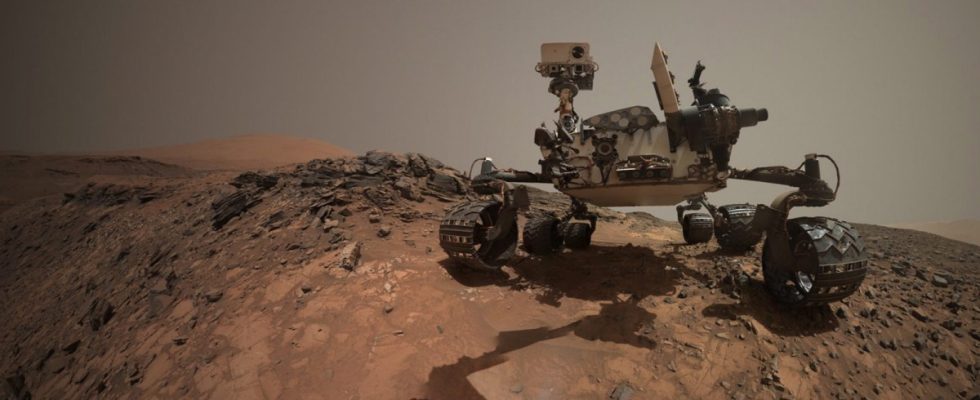There are currently three rovers roaming around Mars. Although equipped with all sorts of scientific instruments, no one has yet managed to find traces of life in the rock samples collected. In order to examine the samples in detail, they would have to be flown to Earth. But the rovers are not designed for that. A return mission, called “Nasa-Esa Mars Sample Return”, is being planned, but it will probably only be realized after 2030 – if the adventurous project succeeds at all. In order to bring Martian rock back to Earth, it would first have to be thrown from one space vehicle to another.
But what if there was an easier way to search for life on Mars? The mineralogist Robert Hazen from the Carnegie Institution for Science in Washington DC now claims to have found one. Together with colleagues, he reports in the specialist journal Proceedings of the National Academy of Sciences of an artificial intelligence (AI)-supported method that can be used to distinguish inanimate from living material. Accordingly, rock samples could still be examined at the site for traces of life.
For this purpose, Hazen’s team developed a test system using machine learning: an AI was trained with extensive data from 134 biotic and abiotic samples. These included rice grains, mussel shells and human hair. The AI also learned to recognize remnants of formerly living things such as fossils or amber. There was also inanimate material, such as chemicals.
The Mars rover “Curiosity” would have the necessary analysis equipment on board
All samples were examined in advance using so-called pyrolytic gas chromatography, coupled with a mass spectrometer. The AI recorded the data of all samples, including information about whether they were biotic or abiotic material. And then it was able to determine with 90 percent accuracy whether an unknown sample was or is living or inanimate – even though the AI was only trained with relatively little data given the variety of possible life forms.
The study authors are enthusiastic about the accuracy of the AI. The method could be used routinely in the future and has the potential to revolutionize the search for extraterrestrial life, Hazen is quoted as saying in a press release.
The research group proposes the Mars rover Curiositywho has been conducting exploration trips on the Red Planet for more than ten years now, to send the protocol of the test method. Curiosity is equipped with its own laboratory, called “Sam” (Sample Analysis at Mars), which consists, among other things, of a mass spectrometer and a gas chromatograph. The rover could record the necessary measurement data itself – and then analyze it using AI. While Mars isn’t exactly considered hospitable to life, simple, robust life forms could potentially hide in layers of rock beneath the surface.
The AI can distinguish biochemistry from inorganic chemistry because it not only looks for specific biomarkers, but also recognizes patterns in the molecular structure of the samples. This provides clues as to which samples were once alive and which were not. One advantage of AI is that it does not use terrestrial forms of life as a standard, but could also recognize alternative types of life that do not exist on Earth.
According to the study authors, the AI test could therefore not only fly on future missions to neighboring planets and other celestial bodies. But it could also help on Earth when examining terrestrial samples where it is not certain whether they are of biotic origin, i.e. whether they are fossils – or simply specially shaped stones.

